30.09.19 - Daniels instructors participate in Toronto's first Biennial of Art
Toronto has officially joined the club of cities with their own international art biennials: the first Toronto Biennial of Art opened on September 21 and will continue until December 1. Among the dozens of artworks, installations, talks, and performances on the agenda are some contributions from Daniels faculty members. Here's what they're up to.
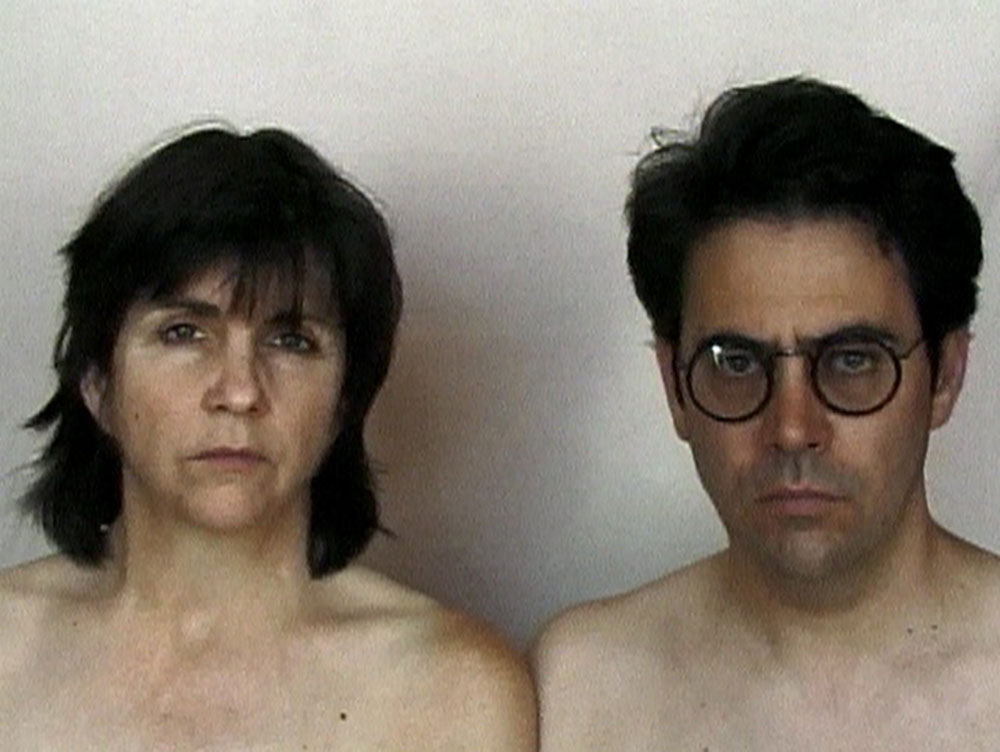
Still from We're Getting Younger All the Time.
...before I wake (2000-12)
Lisa Steele and Kim Tomczak, professors of visual studies
Longtime collaborators Steele and Tomczak produced a trio of related video-art pieces over the course of more than a decade, all three of which are now being presented as a triptych at the Biennial.
We're Getting Younger All the Time (2001) shows the artists growing 12 hours younger over the course of a 20-minute time-lapse video, inviting viewers to contemplate notions of age and youth. Practicing Death (2003) consists of digitally altered footage of the artists' sleeping faces, which appear to be carved from sand.
For Entranced (2012), Steele and Tomczak hired a therapist to hypnotize them. "We wanted to be taken to a door," Steele says. "And when we opened the door, the other would not be there." The video uses a combination of sound, images, and text to show the results of the experiment.
259 Lake Shore Blvd. E. Until December 1. See website for hours.
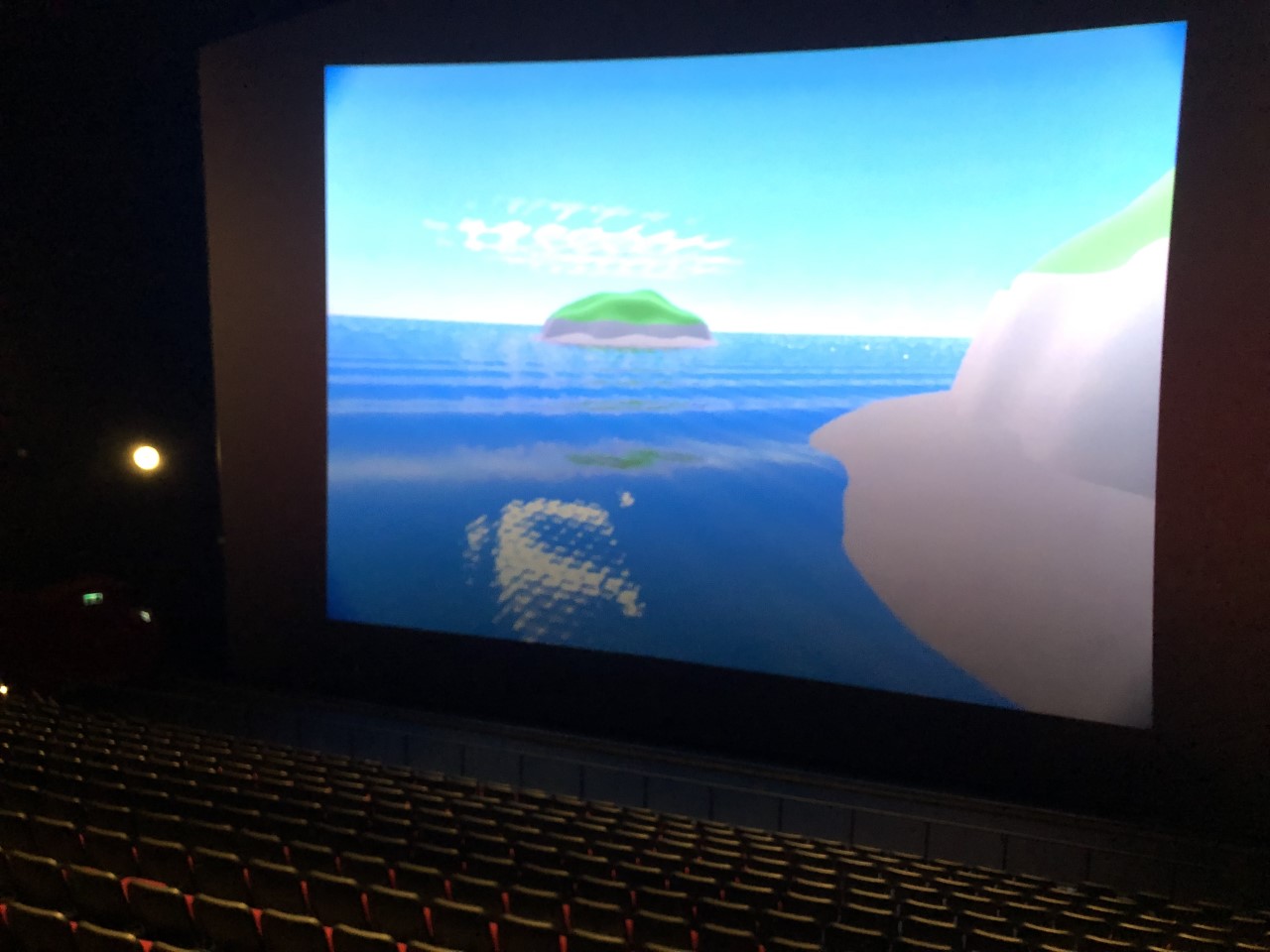
Photo of Carla's Island, by Brandon Poole, showing at the Cinesphere.
The Drowned World
Charles Stankievech, director of visual studies
The Cinesphere, at Ontario Place, is normally a spot for catching blockbuster movies in eye-popping IMAX format. But assistant professor Stankievech has turned the domed 1971 structure into something else entirely.
His installation, The Drowned World, named after a J.G. Ballard novel set in a world that has been devastated by global warming, uses the Cinesphere's giant screen and audio system to show a five-hour series of specially selected film and audio shorts (and also a custom scent, made by the Finnish industrial designer Ville Kokkonen to be reminiscent of the Finnish taiga).
Visitors can linger for the entire five-hour run, or they can consult the schedule and plan out a less lengthy visit.
The film-art marathon includes a number of older pieces, some of which have been revamped to take advantage of the Cinesphere's unique environment. There are also new works, including Cargo Coral, a four-minute video by Stankievech that documents a World War II-era undersea cargo dump off the coast of Vanuatu. Brandon Poole, a Master of Visual Studies student at Daniels, contributed Carla's Island, a four-minute piece based on found footage of the first-ever instance of computer-animated water. (The animation, originally produced in 1981, was considered lost until Poole rediscovered it among some archival IMAX test footage.)
"It's really unique that you can go hang out in the Cinesphere, navigate it and experience things that sound and look different depending upon where you are in the space," Stankievech says. "The show is about ecological issues and how climates have shifted all throughout history. What does that mean for our contemporary time, and for the future of the planet, with or without humans?"
Ontario Place. Until November 30, every Saturday from 11 a.m. to 4 p.m.
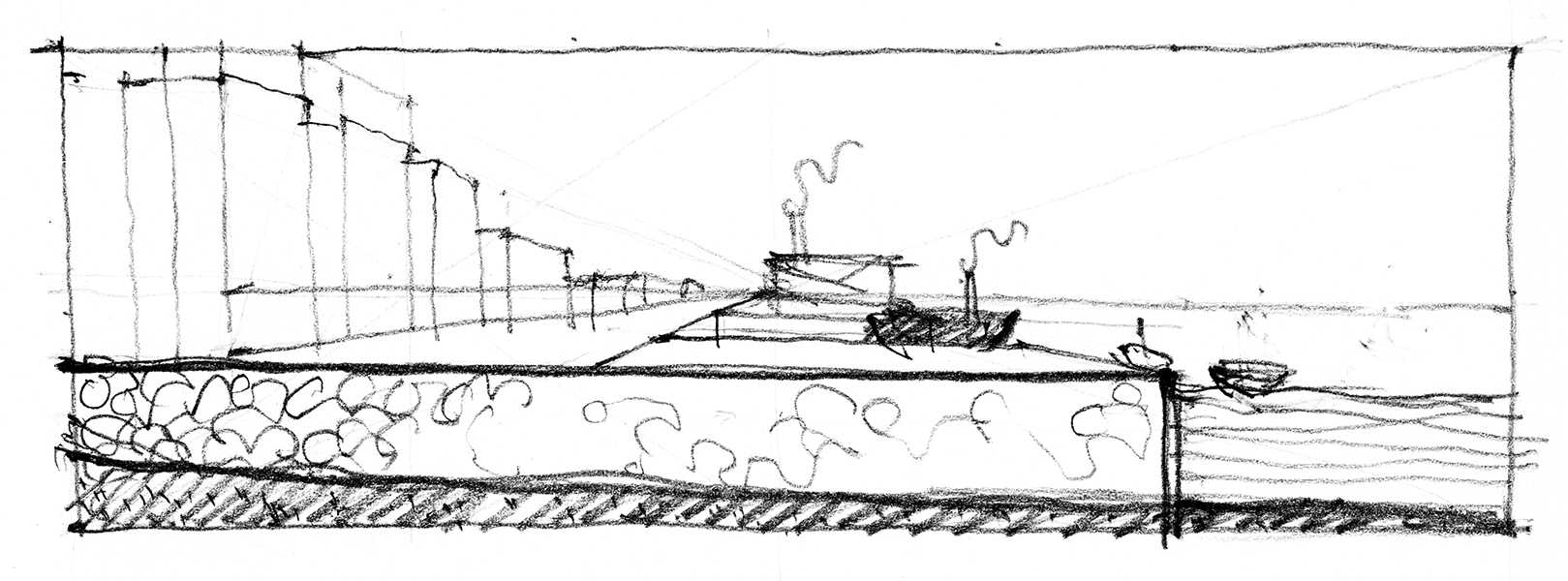
The contemporary shoreline. Illustration by Jane Wolff.
A Walk Across Space and Time: Queen's Quay to Front Street
Jane Wolff, associate professor of landscape architecture
Departing from the Toronto Biennial's home base at 259 Lake Shore Avenue East, associate professor Wolff and her collaborator Susan Schwartzenberg, a curator and visual artist, will lead a tour of Toronto's rapidly developing waterfront area.
"It's a really interesting part of the city, because it's on so many edges," Wolff says. "It's on the edge of the water, it's on the edge of the new wave of urbanization of the waterfront. And it's at the Gardiner Expressway, which is such a key edge in the city. If you walk from there along Queens Quay and the shoreline, up past the Redpath sugar factory, you can see so many different notions about what the city should be."
Wolff and Schwartzenberg will discuss the history of the area, beginning with its initial settlement by European colonists. After a stroll of approximately two hours, participants will return to 259 Lake Shore, where they'll be provided with tools to draw and make notes on what they've just seen and heard. "Our purpose — and the purpose of our ongoing work together — is to help people think about how their observations today can shape their ideas about the landscape's future," Wolff says.
259 Lake Shore Avenue East. November 30, 12 p.m.
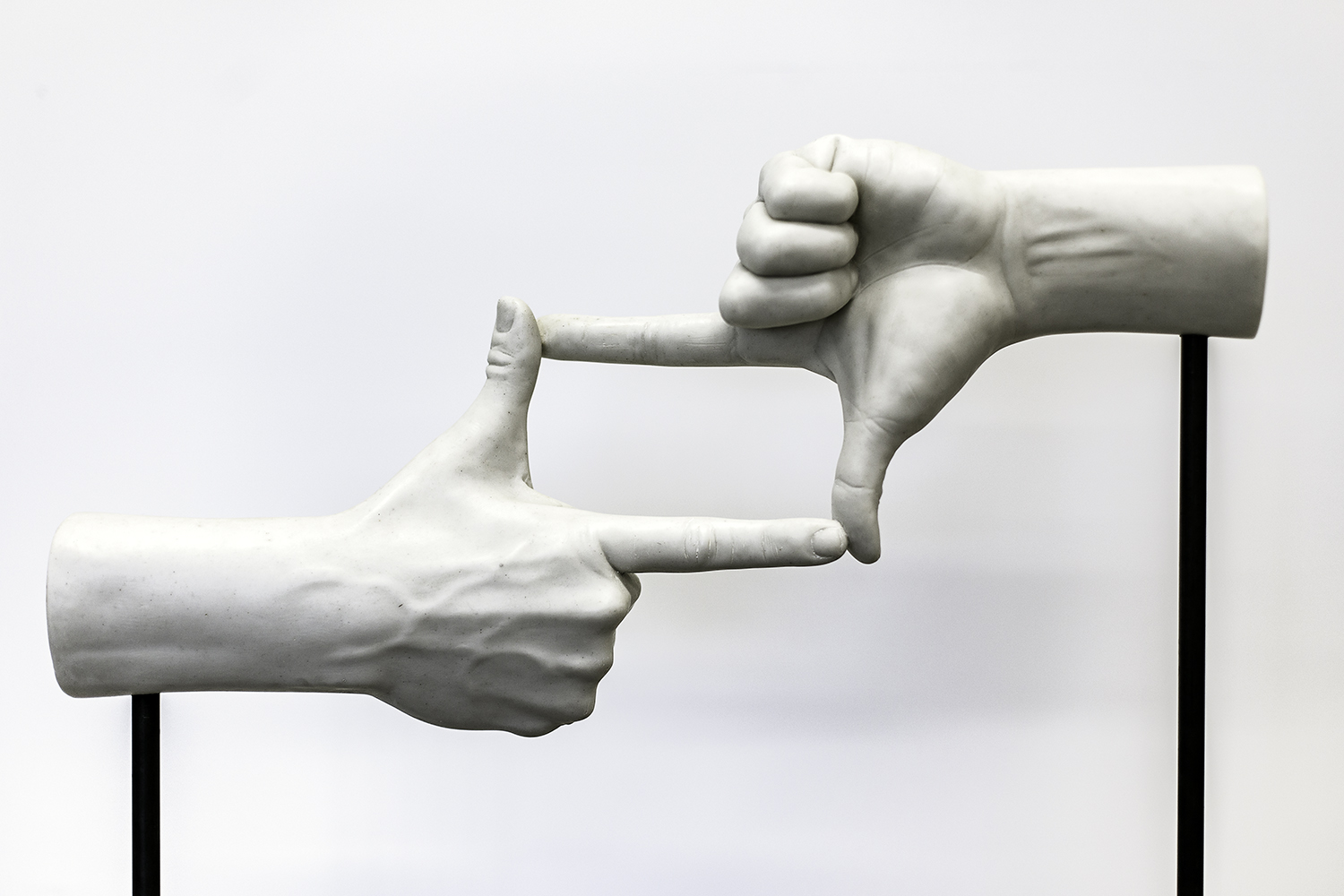
The Riddle, by Luis Jacob. Now on display at Union Station.
The View From Here
Luis Jacob, visiting professor
Jacob, a Toronto-based artist and curator, made a multipart contribution to the Biennial. The View From Here consists of two related installations. At Union Station's Oak Room, Jacob has assembled a series of photographs, rare maps, and historical street views that depict the Toronto area from the 17th century to today, including a 1677 map by Giacomo Giovanni Rossi that depicts the region as the territory of the Huron and Petun peoples.
At 259 Lakeshore Boulevard East, the Biennial's main venue, Jacob has put together a second collection of city-focused photography, complemented by a display of Toronto-themed books and urban-planning documents published between 1872 and today. Rounding out the installation is a series of lectures, organized by Jacob, on topics related to the city's history and geography. One of those lectures will be given by Daniels Faculty assistant professor Fadi Masoud (see below).
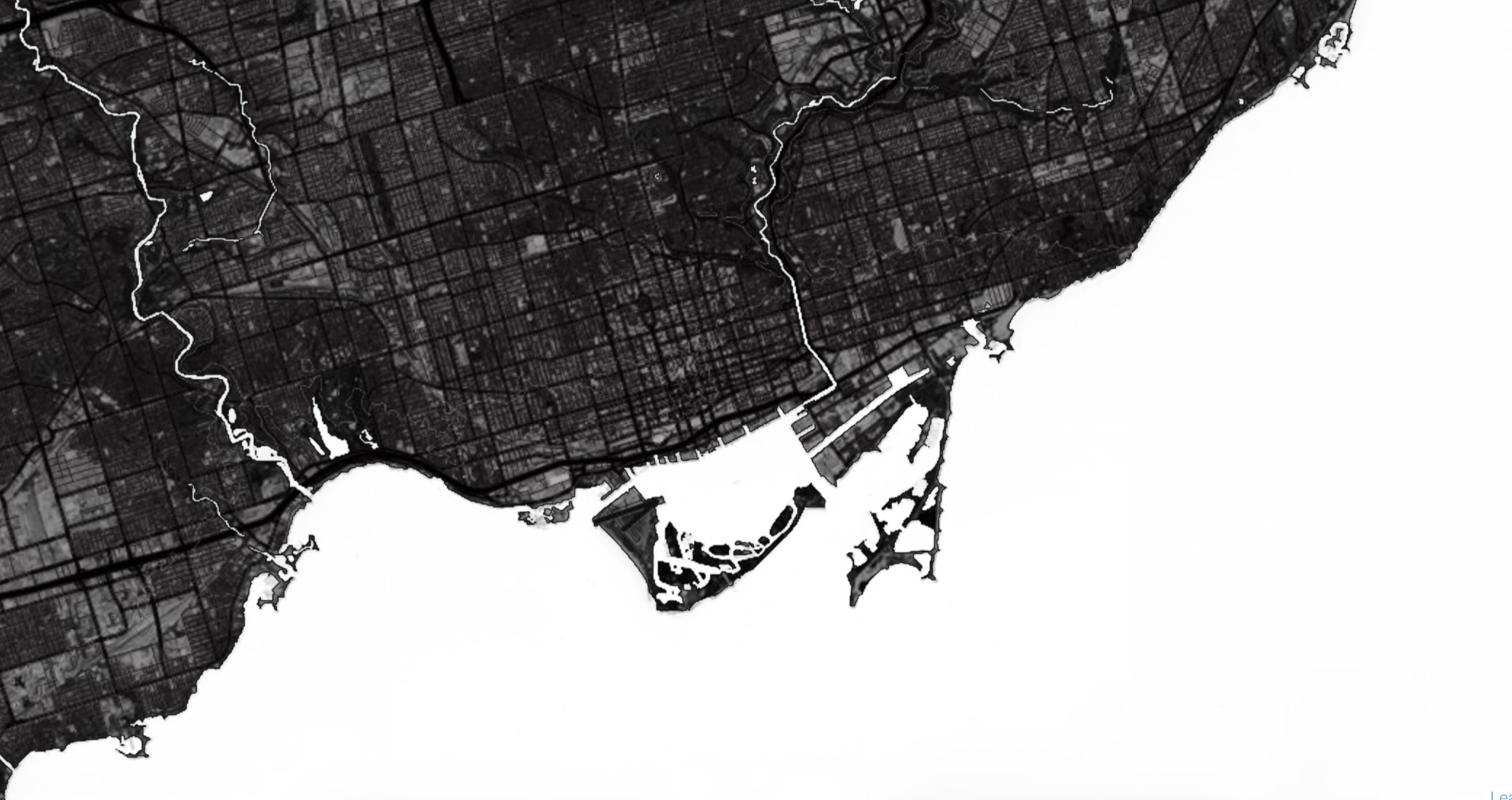
The View From Here: Reading a Moving Shoreline
Fadi Masoud, assistant professor of landscape architecture and urbanism
Professor Masoud's research on the ways coastal cities reclaim land from oceans and lakes has obvious applicability to Toronto, where the city's entire harbourfront district is built on landfill. For the Biennial, as part of a lecture series organized by Luis Jacob, Masoud will participate in a public discussion about Toronto's waterfront with Adrian Blackwell, an artist, designer, and University of Waterloo architecture instructor.
The talk — which will take place, appropriately enough, in a wooden amphitheatre shaped like Toronto's inner harbour, designed for the Biennial by Blackwell — will discuss the ways in which reclaimed land is vulnerable to the damaging effects of climate change, as well as strategies for mitigating those effects. Attendees will participate in a mapping exercise, during which they'll work together to document the natural and man-made forces that are remaking the city's shoreline.
259 Lake Shore Avenue East. November 18, 4 p.m.

